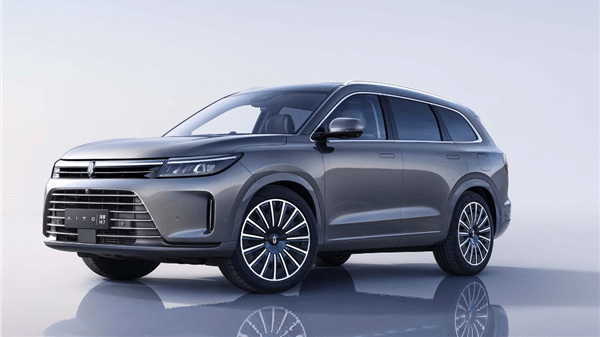意见 欧盟应该效仿中国采用插电式混合动力汽车吗?
随着插电式混合动力汽车在中国销量的激增,它们在欧洲的销量却下降了。欧洲是否应该效仿中国?插电式混合动力汽车是中国进入欧盟的一种方式吗?

几天前,一位朋友让我推荐他可以在英国以约 10,000 英镑(12,700 美元)购买二手 PHEV。我绞尽脑汁地想,首先市场上有哪些 PHEV 出售,其次哪些车已经销售了足够长的时间,可以以这样的价格买到二手车。
-广告-如果在中国问这个问题,我就能列出一整套汽车清单,而且就价格而言,其中许多都是新车而不是二手车。这个问题有助于揭示电气化道路上的分歧,以及欧洲在电气化方面如何日益停滞,而中国却在领先。
插电式混合动力汽车经常受到电动汽车布道者的大力支持,但这并不完全公平。看待这种情况的一种方法是一辆全电动汽车的一个电池单元可以为 PHEV 生产大约 3 或 4 个电池。由于大多数旅程仅使用电力,因此与仅拥有一辆纯电动汽车相比,现在路上使用电力的驾车者数量更多。
- 广告 -那么欧盟和中国的情况相比如何? 5月份,中国插电式混合动力汽车的渗透率为18.0%,而欧盟仅为6.5%,而且总体趋势是欧盟下降,中国上升。
今年早些时候,我们报道了农历新年期间的电动汽车驾驶情况,并谈到了充电问题。当时我们提到科普中国的一篇相当长的帖子微信账号盛赞插电式混合动力汽车的优点。作者在文中提到,2023 年渗透率从 6% 上升到 11.2%。正如作者正确预测的那样,这种趋势似乎仍在持续,目前的数据显示 6 月份迄今为止为 21.4%。应该指出的是,本文中的 PHEV 包括 EREV,尽管其名称实际上是 PHEV 系列,
去年,欧洲插电式混合动力汽车的份额仅为 7.7%,低于 2022 年的 9.4%。5 月份的数字为 6.5%,表明这一趋势仍在持续。换句话说,早在 2021 年,PHEV 就占欧洲插电式市场(中国称之为 NEV)的 46%,但到 2023 年,这一比例已降至 33%。
- 广告 -然而,似乎存在一个更大的问题,即欧盟内部电动汽车的销售总体陷入停滞。截至去年12月,纯电动汽车销量自2020年4月以来持续增长。12月是首次下降,5月是第三次月度下降。 5 月份市场份额为 12.5%,比 2023 年 5 月下降 1.3 个百分点,下降 12%。
欧洲令人惊讶的是混合动力汽车 (HEV) 的持续出色表现。到 2023 年,这些汽车将占据 25.8% 的市场份额,成为仅次于汽油内燃机汽车的第二大份额。 5 月份的数据显示,尽管汽油车的份额与 2023 年的水平相似,但混合动力汽车目前占 29.9%。 Autovista24 报告称,混合动力系统是唯一实现交付量提高的动力系统。
鉴于近乎批发转向 N,混合动力车的销量相对较小电动汽车。据路透社报道,去年销量下降了 15%,仅占中国销售的配备某种形式电气化动力系统的汽车的 9%,因此仅占整个汽车市场的 3% 左右。
中国乘用车协会6月24日发布的报告显示,1-5月新能源汽车(主要是纯电动汽车和插电式混合动力汽车)销量同比增长34.4%。尽管纯电动汽车销量增长了 17.4%,但真正闪亮的开端是插电式混合动力汽车,增长了 70.1%。
快科技援引分析师的话说,与纯电动车型相比,它们在初始购买成本方面具有优势,并减轻了消费者对充电问题的担忧。
最近因比亚迪DM 5.0技术的推出而登上新闻头条就是一个很好的例子。这两款首发车——秦L和Seal 06 DM-i——起价不到10万元人民币(13,750美元),但声称续航里程高达2,100公里,甚至在实际测试中也达到了这一水平。德佩在该版本中,它们还具有 80 或 120 公里的全电动续航里程,足以满足大多数人的日常通勤需求。
任何内燃机或混合动力汽车都无法实现这样的性能。如果欧洲认真考虑减少排放,并在 2035 年之前禁止使用内燃机新车,那么在短期内从混合动力汽车转向插电式混合动力汽车将很有意义。虽然从 2035 年起欧盟的规定也禁止使用插电式混合动力汽车,但它们可以立即减少排放,并为消费者提供一种选择,其成本低于目前购买新的纯电动汽车,但不会比购买混合动力汽车或内燃机高出很多。
在中国,电动汽车(尤其是插电式混合动力汽车)的价格已大幅下降,以至于它们现在已成为传统汽车的真正替代品,而生产商不得不大幅打折内燃机汽车,才能与比亚迪和吉利等汽车公司竞争.
此类汽车也可能是中国对欧盟的暗牌。到目前为止,插电式混合动力汽车尚未纳入欧盟关税范围中国电动汽车销量最高,因此这些可能成为中国未来几年的王牌。
资料来源:Fast Technology、路透社、Autovista24、Statzon
免责声明:本文观点来自原作者,不代表Hawk Insight的观点和立场。文章内容仅供参考、交流、学习,不构成投资建议。如涉及版权问题,请联系我们删除。